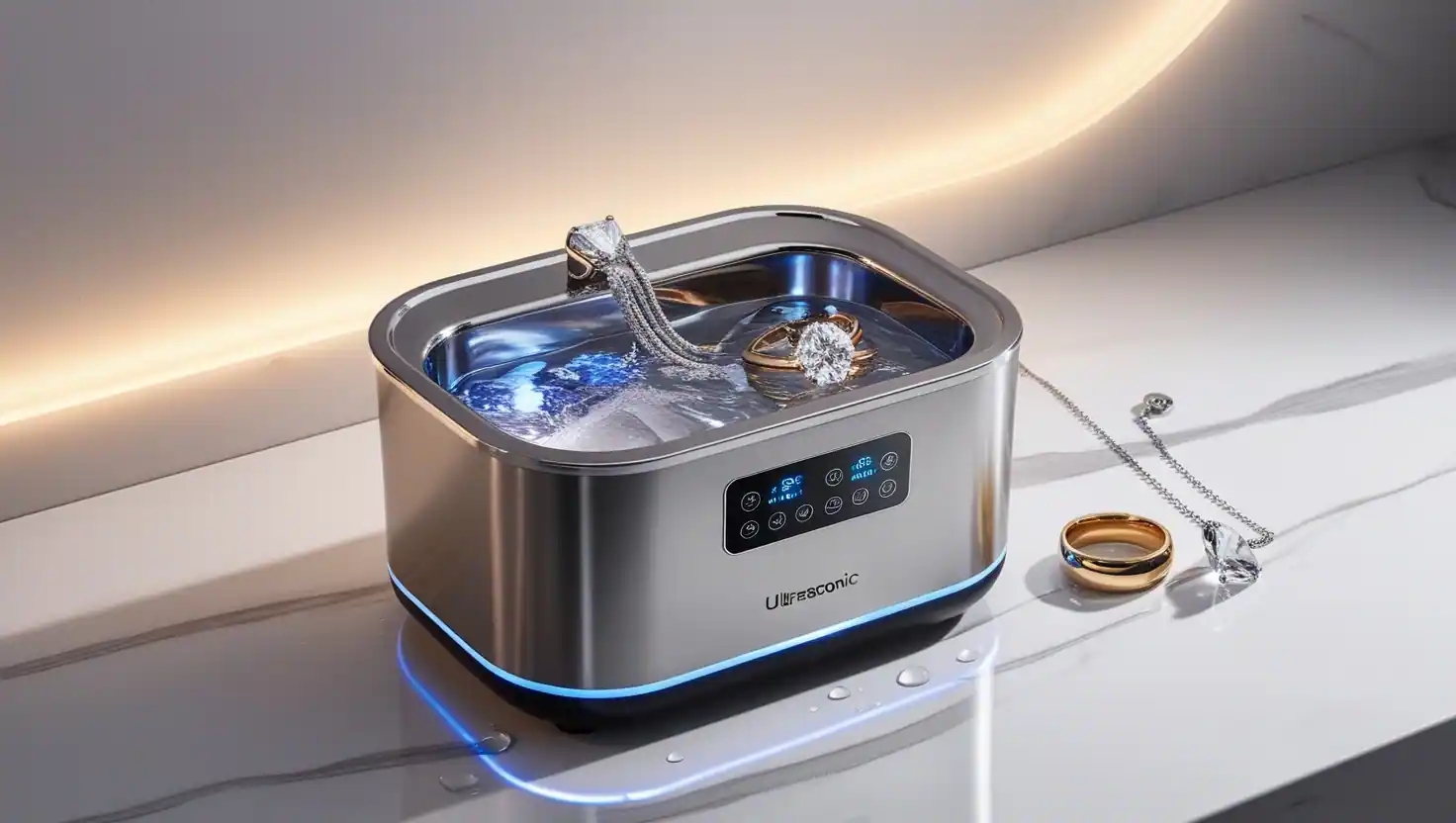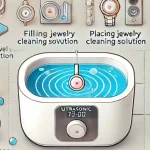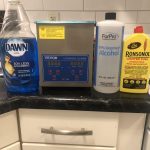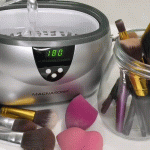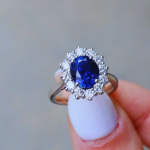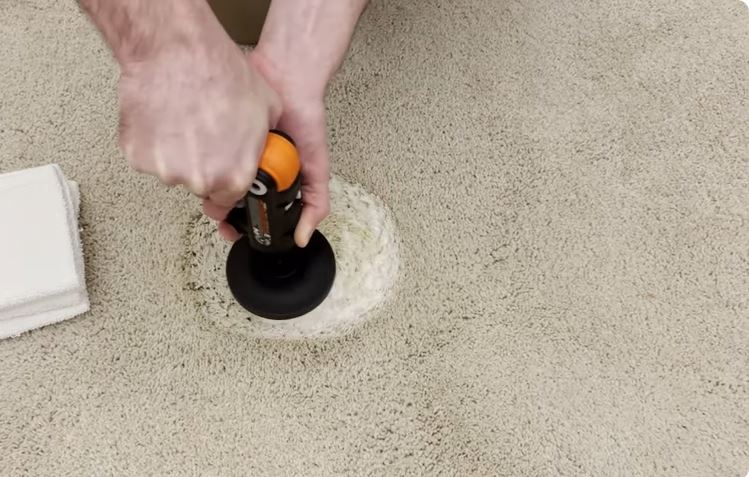Have you ever wondered how to make your jewelry sparkle like new? Let me tell you about a cool gadget called an ultrasonic jewelry cleaner. It’s like magic for your rings, necklaces, and earrings!
Imagine a small machine that uses tiny sound waves to clean your jewelry. That’s what an ultrasonic cleaner does. It’s become super popular because it’s easy to use and does a great job. People love it because it can clean even the tiniest spots on their jewelry that are hard to reach with regular cleaning.
Let’s dive into how these neat machines work and why they’re so good at making jewelry shine. We’ll look at different types, learn how to use them safely, and even explore some other cool things they can clean. By the end, you’ll be an expert on ultrasonic jewelry cleaners!
The Basics of Ultrasonic Jewelry Cleaners
Ultrasonic cleaners are special machines that use sound waves to clean jewelry. These sound waves are so high-pitched that we can’t hear them – that’s why they’re called “ultrasonic.” The machine has a few main parts: a tank to hold water and cleaning solution, a generator that makes the sound waves, and a control panel to operate it.
What makes ultrasonic cleaners different from regular cleaning methods? Well, instead of scrubbing your jewelry by hand, these machines do all the work for you. They create tiny bubbles that pop and clean every nook and cranny of your jewelry. It’s like having a team of tiny cleaners working on your favorite pieces!
| Feature | Ultrasonic Cleaner | Traditional Cleaning |
|---|---|---|
| Cleaning Method | Sound waves | Manual scrubbing |
| Effort Required | Low | High |
| Cleaning Depth | Deep, reaches crevices | Surface level |
| Time Needed | Usually 5-10 minutes | Varies, often longer |
| Suitable for Delicate Items | Yes (with precautions) | Depends on technique |
How Does an Ultrasonic Jewelry Cleaner Work?
The science behind ultrasonic cleaning is pretty cool. When the machine turns on, it sends out super-fast sound waves through the water. These waves create lots of tiny bubbles in a process called cavitation. When these bubbles pop, they make tiny jets of liquid that blast away dirt and grime from your jewelry.
Cavitation is like having millions of tiny scrub brushes working all at once. They can reach places that would be hard to clean by hand. This process works great for most types of jewelry, especially those with intricate designs or small crevices.
Not all jewelry is safe for ultrasonic cleaning, though. Soft stones like pearls or opals can get damaged. It’s best for harder stones like diamonds, rubies, and sapphires. Always check if your jewelry is suitable before using an ultrasonic cleaner.
Types of Ultrasonic Jewelry Cleaners
There are different kinds of ultrasonic cleaners out there. Some are small and perfect for home use, while others are big and powerful for professional jewelers. Home models are usually compact and easy to use. They often have simple controls and are great for everyday cleaning.
When looking for an ultrasonic cleaner, consider things like tank size, power, and extra features. Some have timers or different cleaning modes. Professional models might have larger tanks and more power for cleaning lots of jewelry at once.
| Feature | Home-Use Models | Professional-Grade Models |
|---|---|---|
| Size | Compact | Larger |
| Tank Capacity | Small (usually < 1 liter) | Large (often > 2 liters) |
| Power | Lower | Higher |
| Features | Basic | Advanced |
| Price | More affordable | More expensive |
| Best For | Personal use | Jewelry stores, workshops |
Benefits of Using Ultrasonic Jewelry Cleaners
Ultrasonic cleaners are great for delicate jewelry because they clean without harsh scrubbing. This gentle cleaning helps keep your jewelry looking new for longer. It’s also a big time-saver. Instead of spending ages cleaning each piece by hand, you can clean several items at once in just a few minutes.
Regular cleaning with an ultrasonic cleaner can actually help your jewelry last longer. By removing dirt and oils that build up over time, it prevents damage and keeps your pieces sparkling. Plus, it’s satisfying to see your jewelry come out looking like new after each cleaning session!
Limitations and Precautions
While ultrasonic cleaners are awesome, they’re not for every piece of jewelry. Some stones, like emeralds, opals, and pearls, can be damaged by ultrasonic cleaning. Antique jewelry or pieces with loose stones should also be cleaned carefully, maybe by hand instead.
There are a few risks to watch out for. If you use the cleaner too often or for too long, it might loosen stones or damage delicate settings. Always follow the instructions that come with your cleaner. A common mistake is putting in jewelry that’s not suitable for ultrasonic cleaning, so always check first!
Step-by-Step Guide to Using an Ultrasonic Jewelry Cleaner
Using an ultrasonic cleaner is easy! Here’s how to do it:
- Fill the tank with water and a bit of jewelry cleaning solution.
- Place your jewelry in the basket or directly in the tank.
- Set the timer (usually 3-5 minutes is enough).
- Turn on the machine and let it work its magic.
- When it’s done, rinse your jewelry with clean water and dry it gently.
To keep your cleaner working well, empty and dry the tank after each use. Clean the tank regularly with a soft cloth to prevent buildup. With good care, your ultrasonic cleaner will keep your jewelry sparkling for years to come!
Understanding Ultrasonic Cleaning Solutions
The cleaning solution you use in your ultrasonic cleaner is important. Most cleaners work best with a special ultrasonic cleaning solution. These solutions are designed to work with the sound waves to clean effectively.
You can find many types of cleaning solutions, some made just for certain kinds of jewelry. While some people try homemade solutions, it’s usually safer to use ones made for ultrasonic cleaners. The right solution helps clean better and protects your jewelry.
| Solution Type | Best For | Notes |
|---|---|---|
| General Purpose | Most jewelry | Safe for many materials |
| Specialized | Specific metals or gems | Tailored for certain jewelry types |
| Homemade | Budget option | May not be as effective or safe |
| Professional Grade | Heavy-duty cleaning | Often used in jewelry stores |
Comparing Ultrasonic Cleaners to Other Methods
Ultrasonic cleaning is different from other ways of cleaning jewelry. Let’s compare it to manual cleaning and steam cleaning:
Manual cleaning involves using a soft brush and soapy water. It’s good for basic cleaning but can miss hard-to-reach spots. Ultrasonic cleaning gets into these tiny spaces better.
Steam cleaning uses hot steam to clean jewelry. It’s great for some pieces but can be too harsh for others. Ultrasonic cleaning is often gentler and works well for more types of jewelry.
Choose ultrasonic cleaning when you want a deep clean for sturdy jewelry with intricate designs. For very delicate or antique pieces, manual cleaning might still be best. Steam cleaning is good for certain tough jobs, but ultrasonic cleaning is more versatile for everyday use.
Choosing the Right Ultrasonic Jewelry Cleaner
When buying an ultrasonic cleaner, think about these things:
- Size: How much jewelry do you need to clean at once?
- Power: More powerful cleaners work faster but cost more.
- Features: Do you want a timer, different cleaning modes, or a heater?
- Brand reputation: Look for brands known for quality and good customer service.
Some well-known brands include Magnasonic, iSonic, and GemOro. You can find good cleaners at different price points. Even budget-friendly options can do a great job for home use.
Real-World Applications of Ultrasonic Cleaners
Professional jewelers love ultrasonic cleaners because they can clean lots of jewelry quickly and thoroughly. They often have larger, more powerful machines to handle many pieces at once.
Ultrasonic cleaners aren’t just for jewelry, though! People use them to clean all sorts of things:
- Eyeglasses and sunglasses
- Watch parts
- Small electronic components
- Dental and medical instruments
- Coins and collectibles
These versatile machines are great for cleaning anything small with intricate details. Just make sure whatever you’re cleaning is safe for ultrasonic cleaning first!
The Future of Ultrasonic Jewelry Cleaning
The world of ultrasonic cleaning is always improving. Newer models are becoming more energy-efficient and environmentally friendly. Some cleaners now use biodegradable cleaning solutions, which is great for the planet.
We might see smart ultrasonic cleaners in the future that can connect to your phone or automatically adjust cleaning settings based on what you put in them. As technology advances, these cleaners might become even better at cleaning different types of jewelry safely.
The trend in jewelry care is moving towards more convenient and effective cleaning methods. Ultrasonic cleaners are likely to become even more popular as they get easier to use and more affordable for home use.
Summary and Key Takeaways
Ultrasonic jewelry cleaners are amazing tools that use sound waves to clean your jewelry deeply and gently. They’re great for most types of jewelry, especially pieces with intricate designs. Here’s what to remember:
- They work by creating tiny bubbles that pop and clean your jewelry.
- They’re easy to use and can save you time compared to manual cleaning.
- Not all jewelry is safe for ultrasonic cleaning, so always check first.
- Using the right cleaning solution is important for the best results.
- Regular cleaning with an ultrasonic cleaner can help your jewelry last longer.
Whether you’re a jewelry lover or just want to keep your favorite pieces looking great, an ultrasonic cleaner can be a fantastic addition to your jewelry care routine. It’s a simple way to keep your treasures sparkling like new!
Frequently Asked Questions (FAQs)
Can ultrasonic cleaners damage my jewelry?
While generally safe for most jewelry, they can damage soft stones or loose settings. Always check if your piece is suitable for ultrasonic cleaning.
How long does the cleaning process usually take?
Most cleaning cycles last between 3 to 10 minutes, depending on how dirty the jewelry is and the cleaner’s settings.
Do ultrasonic cleaners require professional maintenance?
Most home models don’t need professional maintenance. Regular cleaning and proper use are usually enough to keep them working well.
What are the best alternatives if I don’t have an ultrasonic cleaner?
Gentle hand cleaning with mild soap and warm water is a good alternative. For tougher jobs, you can use a soft brush or take your jewelry to a professional cleaner.
Is it safe to use ultrasonic cleaners for antique or heirloom pieces?
It’s best to be cautious with antique jewelry. Consider having a professional jeweler clean these special pieces instead.

